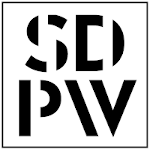Wykaz obszarów badawczych:
| # | Research Area | Dziedzina naukowa |
|---|---|---|
| 1 |
Synthesis, studies on properties and application of nanoparticles in the construction of biotests and biosensors - the research will involve synthesizing hybrid nanoparticles with the desired magnetic, optical and catalytic properties, which after surface modification with selected receptors (antibodies, oligonuclotides or others) will be used in the development of modern bioanalytical tools for determination of clinically significant disease biomarkers.
|
Chemical-Sciences |
| 2 |
Studies on interactions of clinically significant analytes with the receptor layers using label-free analytical techniques - the research will be focused on investigations of new receptors enabling the development of biosensors and biotests for the detection or determination of clinically relevant analytes (mainly disease biomarkers). The research will be based on techniques enabling the determination of kinetic and thermodynamic parameters of interactions used in the construction of such devices (bioreceptor - biomarker), e.g. SPR.
|
Chemical-Sciences |
| 3 |
Synthesis and application of nanoparticles in therapies - as part of the research, nanoparticles with the desired optical, magnetic and catalytic properties, which can be used in anti-cancer therapies through the ability to generate heat under the influence of infrared radiation, the applied magnetic field or the ability to catalytically generate reactive oxygen species and other types of toxic radicals, will be synthesized. The nanoparticles will be modified with receptors / ligands that recognize proteins characteristic for cancer cells.
|
Chemical-Sciences |
| 4 |
The use of electrospun materials in the construction of modern bioanalytical tools - Electrospinning is a modern technique for producing polymeric mats (both from natural and synthetic polymers) with an expanded surface area and high porosity. The method also makes it possible to produce composite structures enriched with nanoparticles, which boosts their range of applications by giving them new properties. Such mats can be utilized in bulk technologies (catalytic processes or wastewater treatment) or for more sophisticated biomedical or bioanalytical applications. Their numerous unique features also allow their use in the construction of biosensors and biotesters as transducer modifiers, as well as layers in/on which the most important receptors, from the point of view of these bioanalytical devices, are immobilized.
|
Chemical-Sciences |
| 5 |
Advanced Microfluidic and Organ-on-Chip Systems in Biotechnology and Precision Medicine – research focuses on the design, fabrication, and application of innovative microfluidic platforms and Organ-on-Chip (OoC) systems, which enable the creation of biomimetic models of human tissues and organs. These models enable the study of disease mechanisms, interactions between different cell types, and the testing of new therapies in a controlled laboratory environment. This area encompasses the development of microfabrication technologies (photolithography, micromilling, 3D printing, thin-film lamination), the design of microenvironments supporting cell co-cultures, and the integration of real-time cell function monitoring systems (e.g., TEER/EIS techniques, fluorescence imaging, molecular methods). These platforms are used in basic research, toxicology, pharmacology, and precision medicine, contributing to the development of a new generation of in vitro models that better represent human physiology.
|
Biotechnology |
| 6 |
Design and development of integrated point-of-care systems for biomedical diagnostics – this research area encompasses the development of modern, miniaturized point-of-care (POC) diagnostic devices that integrate sample preparation, analysis, and result reading functions into a single system. Research focuses on the design of disposable microfluidic systems (cassettes, cartridges, LFA test strips) and the construction of autonomous readers enabling diagnostic testing directly at the patient. This includes the development of integrated flow management systems (micropumps, microvalves, microfluidic channels), measurement electronics, control software, and user interfaces. Particular emphasis is placed on the integration of biosensors (e.g., electrochemical, optical) with microfluidic platforms and the automation of the entire diagnostic process. The technologies being developed are used in companion diagnostics, oncology, cardiovascular diseases, and many other conditions requiring rapid and precise biomarker detection. Furthermore, the systems being developed can be adapted to detect infectious agents, including viruses, bacteria, and parasites, enabling their use in the rapid diagnosis of infectious diseases in clinical settings, in the field, and during crisis situations. Such platforms also have potential for diagnostic applications in the military, emergency services, and combat medicine, where mobility, speed, independence from laboratory infrastructure, and the ability to operate in challenging environmental conditions are essential.
|
Chemical-Sciences |
